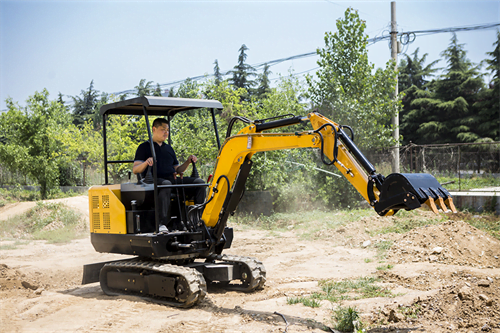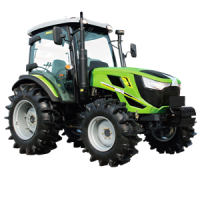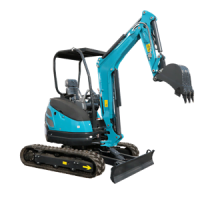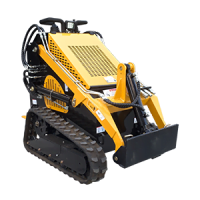Introdução
As introduções são um aspecto crucial de qualquer texto, pois definem o tom, fornecem contexto e capturam a atenção do leitor. Ao elaborar uma introdução, é essencial envolver o público desde o início e convencê-lo a continuar lendo. Isso pode ser alcançado usando ganchos que chamam a atenção, perguntas instigantes ou declarações intrigantes.
An effective introduction not only introduces the topic but also highlights its significance and relevance to the reader. It should provide a clear roadmap of what the article will cover, giving the audience a glimpse of the valuable insights they can gain from reading further.
To ensure a compelling introduction, writers often employ a conversational and informal tone, making the content approachable and relatable to the reader. By utilizing personal pronouns and rhetorical questions, the writer can establish a connection with the audience, fostering a sense of camaraderie and understanding.
O que é Escavadora Capacidade de elevação?

Excavator lifting capacity refers to the maximum weight that an excavator can safely lift and handle without exceeding its structural limitations or posing a safety risk. This crucial specification is a fundamental factor that operators and professionals in the construction and industrial sectors must consider before undertaking any lifting task.
The lifting capacity of an excavator is typically measured in metric tons or pounds, representing the upper limit of the load it can carry and manipulate with stability and control. It is a critical parameter that ensures the safety of personnel working around the machine and prevents accidents due to overloading, which could lead to serious injuries or equipment damage.
Excavator lifting capacity is influenced by various factors, including the machine’s hydraulic system, boom and arm length, counterweight, ground conditions, and load positioning. Each of these elements plays a significant role in determining how much weight the excavator can lift effectively and safely.
Importance of Knowing Excavator Lifting Capacity
Knowing the excavator lifting capacity holds immense importance in the construction and industrial sectors, where these powerful machines are extensively used for a wide range of tasks. Understanding and adhering to the lifting capacity is a fundamental aspect that directly impacts the safety, efficiency, and overall success of lifting operations.
- Segurança em primeiro lugar: Safety should always be the top priority in any construction or industrial setting. Knowing the excavator’s lifting capacity ensures that lifting tasks are performed within safe limits, minimizing the risk of accidents, injuries, and equipment damage. Overloading an excavator can lead to catastrophic consequences, such as tip-overs or structural failures, endangering both personnel and bystanders.
- Accident Prevention: By being aware of the excavator’s lifting capacity, operators can avoid overloading the machine, which is one of the leading causes of accidents involving excavators. Accurate knowledge of the lifting capacity enables operators to make informed decisions and prevents potential disasters on the job site.
- Machine Longevity: Operating an excavator within its designated lifting capacity helps maintain the machine’s structural integrity and prolong its lifespan. Overloading the excavator can place excessive strain on its components, leading to premature wear and tear and the need for costly repairs or replacements.
- Efficient Task Planning: Understanding the lifting capacity allows project managers and operators to plan lifting operations effectively. By knowing the maximum weight the excavator can handle, they can allocate resources appropriately and ensure that the right equipment is used for each task.
- Optimal Productivity: Working within the excavator’s lifting capacity ensures that tasks are executed efficiently. Attempting to lift loads beyond the machine’s limits can result in slow and unstable operations, leading to wasted time and decreased productivity.
Factors Affecting Excavator Lifting Capacity
Several factors influence an excavator’s lifting capacity, and being aware of these factors is essential for optimal performance and safety.
Sistema Hidráulico
The hydraulic system of an excavator plays a significant role in determining its lifting capacity. Efficient hydraulics with adequate pressure and flow ensure smooth lifting operations.
Comprimento da lança e do braço
The length of the excavator’s boom and arm also affects its lifting capacity. Longer booms and arms may reduce the machine’s lifting capability as they distribute the load over a larger area.
Contrapeso
A properly balanced counterweight is essential for stabilizing the excavator during lifting tasks. It enhances the machine’s ability to handle heavier loads safely.
Ground Conditions
The type and condition of the ground on which the excavator operates impact its lifting capacity. Soft or uneven terrain may decrease the machine’s stability and lifting ability.
Load Positioning
Properly positioning the load and maintaining a stable center of gravity are critical for safe lifting operations. Incorrect load positioning can lead to tipping or overloading.
Entendimento Escavadora Load Charts
Understanding excavator load charts is essential for anyone involved in operating or managing excavators in construction, mining, forestry, and various industrial applications. Excavator load charts are comprehensive documents provided by manufacturers that offer vital information about the machine’s lifting capacities under different configurations and conditions.
- Accurate Load Capacities: Excavator load charts provide precise details about the maximum weight the machine can lift at various boom lengths, arm lengths, and operating radii. This information is crucial for operators to determine the safe lifting capacity for different tasks.
- Boom and Arm Configurations: Load charts showcase the lifting capacities corresponding to different combinations of boom and arm lengths. This allows operators to select the most appropriate configuration for specific lifting requirements, optimizing the machine’s performance.
- Counterweight Considerations: Load charts often include information about the counterweight requirements for specific lifting tasks. Proper counterweight distribution is critical for maintaining stability during lifting operations.
- Outrigger or Blade Extension: In certain excavator models, extending the outriggers or blade can affect the lifting capacity. Load charts clarify the impact of these extensions, helping operators make informed decisions during complex lifting operations.
- Variable Radius Lifting: The load chart also takes into account the lifting capacity at various radii around the machine. This ensures that operators understand how the weight-bearing capabilities change when lifting loads at different distances from the excavator.
- Safety Precautions: Excavator load charts often include safety warnings and precautions related to lifting operations. Operators can refer to these guidelines to ensure that lifting tasks are carried out with the utmost safety.
- Site-Specific Planning: Understanding the load chart allows project managers to plan lifting tasks according to the machine’s capabilities. This ensures that loads are lifted safely and efficiently, preventing potential accidents or equipment damage.
- Real-Time Decision Making: During lifting operations, circumstances may change, necessitating adjustments in the lifting configuration. Operators can refer to the load chart to make real-time decisions on load capacity adjustments based on the changing requirements.
- Compliance and Regulations: Many industries have regulations and standards governing safe lifting practices. Adhering to the load chart specifications ensures compliance with these regulations, mitigating potential legal issues and liabilities.
- Treinamento e Certificação: Understanding excavator load charts is an integral part of operator training and certification programs. Operators must demonstrate their proficiency in interpreting and applying load chart information before receiving certification to operate the equipment.
- Risk Reduction: Utilizing load charts as part of a risk management strategy helps reduce the likelihood of accidents and overloading incidents. This proactive approach enhances job site safety and minimizes potential risks to personnel and equipment.
Considerações de segurança
Safety should always be a top priority when dealing with excavator lifting capacity.
Overloading Risks
Exceeding the excavator’s lifting capacity can lead to catastrophic accidents, causing injury to personnel and damage to equipment.
Stability Concerns
Improper load positioning or inadequate counterweight can compromise the excavator’s stability, leading to tipping and potentially fatal accidents.
Proper Rigging and Attachment Use
Using appropriate rigging techniques and compatible attachments is crucial for safe lifting operations. Improper rigging can result in load slippage and accidents.
Increasing Escavadora Capacidade de elevação

In certain situations, it may be necessary to increase an excavator’s lifting capacity for specific tasks.
Upgrading the Hydraulic System
Upgrading the hydraulic system can enhance the excavator’s lifting performance, allowing it to handle heavier loads efficiently.
Adding Counterweights
Adding extra counterweights can improve the machine’s stability and increase its lifting capacity.
Using Proper Attachments
Choosing the right attachments for lifting tasks can optimize the excavator’s capabilities and improve overall productivity.
Excavator Lifting Capacity for Different Models
Different excavator models have varying lifting capacities, and it is essential to choose the right model for specific projects based on their lifting requirements.
Real-Life Applications
Excavator lifting capacity finds extensive use in various industries.
Indústria da Construção
In construction projects, excavators are indispensable for tasks such as lifting heavy construction materials and placing them in specific locations.
Operações de Mineração
In mining operations, excavators are used to move large quantities of earth and minerals efficiently.
Forestry and Logging
Excavators play a vital role in the forestry industry, assisting in the handling and processing of timber and other forestry products.
Benefits of Optimal Escavadora Capacidade de elevação
Ensuring that an excavator operates within its optimal lifting capacity offers several benefits, including increased productivity, reduced downtime, and enhanced overall safety.
Conclusão
In conclusion, understanding the facts about excavator lifting capacity is essential for anyone working with these powerful machines. Knowing the limitations, safety considerations, and how to optimize lifting capacity can significantly impact the success and safety of construction, mining, and forestry projects, among others. By adhering to the manufacturer’s guidelines and prioritizing safety, operators can harness the full potential of excavators and ensure efficient and secure lifting operations.
Perguntas frequentes
- P: What happens if an escavadora is overloaded?
A: Overloading an excavator can lead to accidents, causing injury to personnel and potential damage to the machine. - P: Can I increase an excavator’s lifting capacity?
A: In some cases, it may be possible to increase an excavator’s lifting capacity by upgrading its hydraulic system or adding counterweights. - P: How do I choose the right excavator model for a project?
A: To choose the right excavator model, consider the lifting requirements and select a machine with an appropriate lifting capacity. - P: What are the main factors affecting an excavator’s lifting capacity?
A: The main factors include the hydraulic system, boom, and arm length, counterweight, ground conditions, and load positioning. - P: Why is safety important when dealing with excavator lifting capacity?
A: Safety is crucial to prevent accidents, protect personnel, and avoid damage to the excavator and surrounding environment.





-1.png)